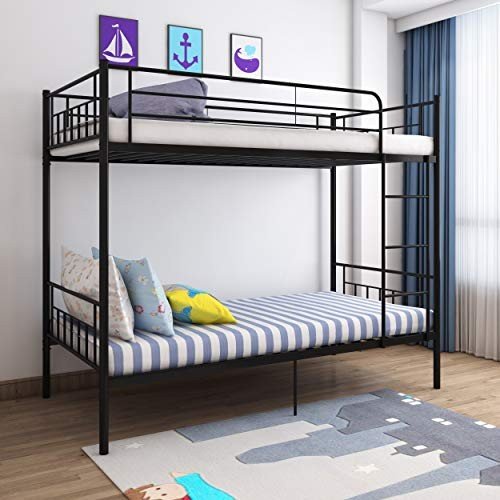11 “Faux Pas” That Are Actually Acceptable To Do With Your Kids Bunkbed
Title: The Ultimate Guide to Kids Bunk Beds
Intro
As children grow, so does their need for space and storage options. Bunk beds are an exceptional way to take full advantage of space while providing a fun and functional sleeping plan for your kids. This thorough guide will check out the numerous types, advantages, safety considerations, and FAQs associated with kids bunk beds.
I. Types of Kids Bunk Beds
- Standard Bunk Beds: These are the most typical type, featuring 2 twin-sized beds stacked on top of each other.
- Futon Bunk Beds: The bottom bunk is changed with a futon, providing a sofa and a bed in one piece of furnishings.
- Twin-Over-Full Bunk Beds: The bottom bunk is larger, accommodating a full-sized bed mattress, while the leading bunk is a twin.
- L-Shaped Bunk Beds: These include 2 beds put perpendicularly, supplying more floor space below.
- Loft Bunk Beds: A single bed is placed on a raised platform, leaving space for a desk, play location, or storage below.
II. Benefits of Kids Bunk Beds
- Space-Saving: Bunk beds are perfect for smaller bedrooms, maximizing flooring area for other activities and furniture.
- Enjoyable and Exciting: Children frequently delight in the novelty and experience of going up to their own personal sleeping area.
- Cost-Effective: Purchasing one bunk bed is more inexpensive than buying two separate beds.
- Versatile: Many bunk beds can be separated into two different beds as children age or when area enables.
- Built-In Storage: Some bunk beds come with integrated storage services, such as drawers, desks, or shelves.
III. Safety Considerations
- Durable Construction: Ensure the bunk bed is made from tough, long lasting products and has a safe ladder for safe gain access to.
- Proper Spacing: Gaps in between the bed mattress and the frame must be less than 3.5 inches to avoid entrapment.
- Appropriate Height: Select a bunk bed with a proper height for your child, considering their age, size, and capability to climb and down safely.
- Secure Mattresses: Use the proper size mattress and secure it to the bed frame to avoid it from moving during sleep.
- Guardrails: Ensure guardrails are set up on both sides of the leading bunk and are at least 5 inches greater than the top of the bed mattress.
IV. FAQs
- What is the ideal age for a child to sleep on the leading bunk?It is usually suggested to wait until a child is at least 6 years of ages before allowing them to sleep on the top bunk.
- Can bunk beds be separated into 2 different beds?Yes, some bunk beds can be disassembled and converted into two different beds.
- How much space is required in between the bottom of the top bunk and the top of the bottom bunk? buy bunk bed online of 2 feet 8 inches is suggested for head clearance on the bottom bunk.
- Are bunk beds safe for children?When properly put together and utilized, bunk beds are safe for children. Always follow security guidelines and ensure your child understands the guidelines for utilizing the bunk bed.
V. Conclusion
Kids bunk beds are a useful and enjoyable option for optimizing space and offering a special sleeping experience for your children. By considering the various types, benefits, and safety considerations, you can make a notified choice when selecting the ideal bunk bed for your household.
